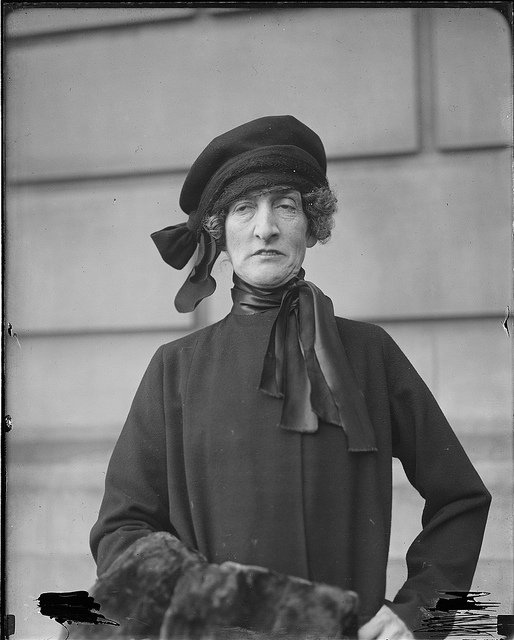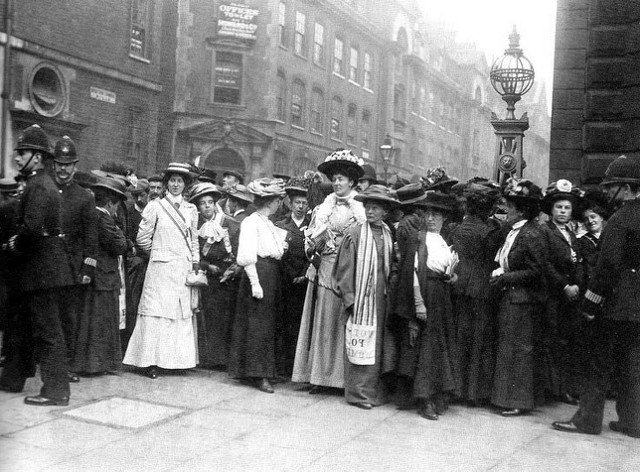
While slogans like “Fight the Patriarchy” and the goal of breaking the glass ceiling might be strongholds of the feminist movement today, there was a time when the most daring thing a woman could ask for was the simple right to vote. The groundbreaking suffragist Emmeline Pankhurst, who is celebrated each year in the United Kingdom on July 14, did just that.
Born in 1858, Pankhurst grew up in a world unfairly biased toward men. She realized this at a young age, when her parents prioritized her brothers’ education over hers, despite the fact that both of them were politically progressive and supported women’s right to vote.
She eventually ended up attending finishing school in Paris, where she learned bookkeeping, chemistry, and other subjects not often taught to women, along with traditional home economics and manners. She married 44-year-old liberal lawyer, Richard Pankhurst, at the age of 20.
The activist roots of her parents inspired her to put effort into enacting change, never thinking one voice was too small to do good. Although Pankhurst had traditional obligations to her husband and five children, she never failed to show up when the cause was something important to her.

Read more: The History of International Women’s Day
What Pankhurst is best known for are her incredible efforts to achieve women’s suffrage in Great Britain. In 1903, at age 45, Pankhurst created a group of women called the Women’s Social and Political Union. The WSPU focused on women’s voting rights with the motto “Deeds Not Words.”
An event in 1905 was a turning point for Pankhurst. Her daughter and another member of the group were arrested during a tussle with police. After the incident was covered by the newspapers, she realized that for the group and its mission to get noticed, they’d need to be more aggressive and combative.
Being women turned out to be one of the group’s biggest strengths, because politicians underestimated them.
But by 1913, the group was smashing windows, setting fires, and damaging public art. Whenever these suffragettes were arrested, they would go on hunger strikes in prison.
Pankhurst was given a 9-month sentence for throwing a rock at the prime minister’s house and was freed after a hunger strike. However, not all hunger strikes resulted in early release; rather, many hunger strikes resulted in violent force-feeding.
Why should we look to Pankhurst as a role model now, more than 100 years later?
Women were expected to conform to traditional feminine ideals back then, and still are today. However, Pankhurst and her peers threw that all out the window in the name of their cause. As Pankhurst said, “We threw away all our conventional notions of what was 'ladylike' and 'good form', and we applied to our methods the one test question: will it help?”
And just as feminism today is opposed and disparaged by many, including women, there were many anti-suffrage groups that sought to stop the movement. Even Queen Victoria opposed women’s suffrage, writing that it was necessary to “check this mad wicked folly of ‘Woman’s Rights’, with all its attendant horrors, on which [my] poor sex is bent.” However, the suffragettes took strength from the hate, fearless in the face of powerful dissent, and in turn set an example for all women’s rights activists to come.
Read more: 12 Female Activists You Didn’t Know Are Changing the World
The tension of the suffrage movement came to a head in 1913 when a weapon used to start a fire went off in a house being built for a government official, David Lloyd-George. Pankhurst was sentenced to three years of penal servitude for inciting the act. However, when World War I began in 1914, Pankhurst called a halt to the combative action and joined the war effort, encouraging members of her activist group to do the same.
The efforts of women in wartime convinced the government to pass limited voting rights for women in 1918 – women over 30 who were property owners could vote.
Pankhurst subsequently ran for Parliament as a Conservative candidate in 1926. It was only in 1928, 18 days after Pankhurst’s death at age 69, that women in the UK were given equal voting rights to men.
Emmeline Pankhurst is a symbol of courage and strength for all women, as well as all people trying to make change and shirk oppression. She showed up to fight for her rights and beliefs. In order to make waves in society and cause change, the first step is to #shOwup.